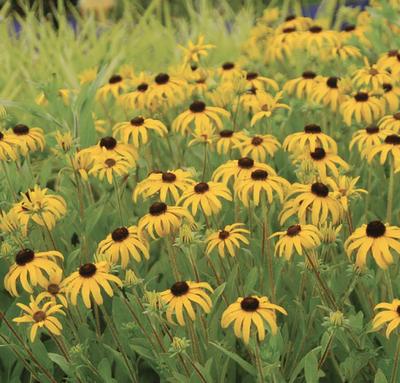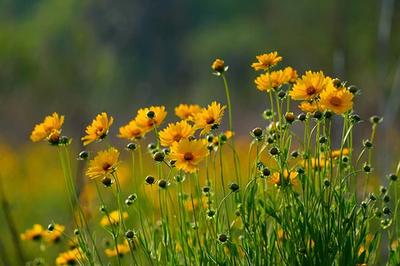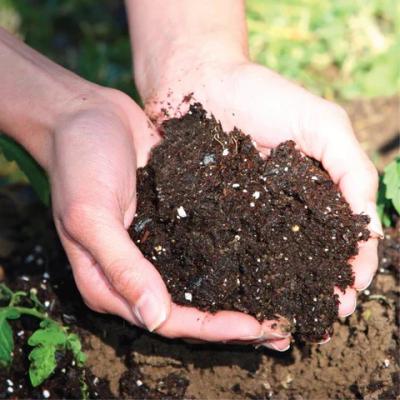
Share:
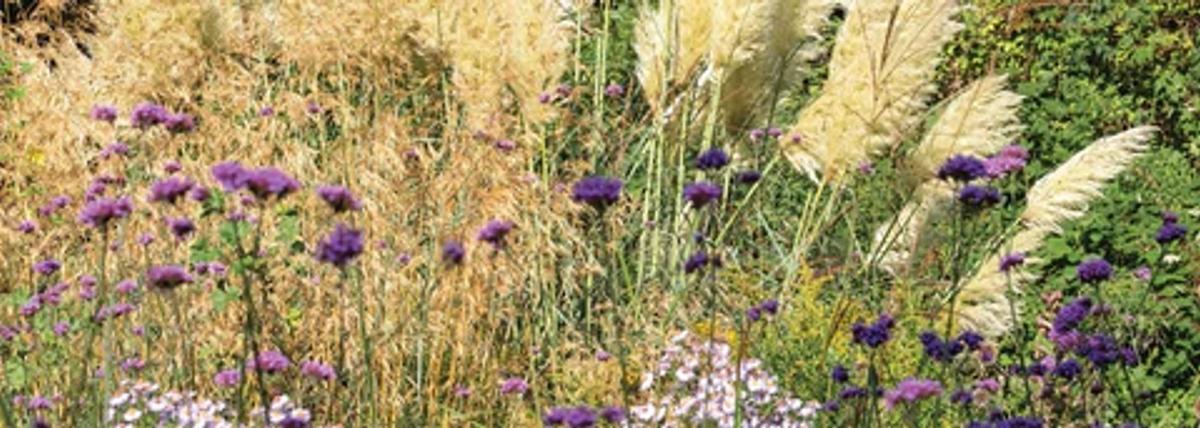
Compared to lawns, native plant gardens offer many attractive benefits like low-maintenance, low-cost, pollinator-friendly, and sustainability. No wonder why there has been an increasing shift towards native gardens in the last few years. Unfortunately, while native plant landscaping is an excellent alternative to lawns, many people mistakenly assume them to be easy and self-growing gardens.
The fact is, native plant gardens come with their own set of challenges, although fewer than growing ornamental gardens or lawns. In fact, many homeowners find the initial setup phase quite challenging due to a lack of understanding of natives. But once you identify these design rules and act at the right time, you have a self-sustainable, beautiful-looking yard all around the year. An added advantage is that gardening now feels more like a hobby instead of a chore.
This article explains the common challenges associated with a native plant garden that many of us are unaware of!
What are the Challenges of Growing a Native Plant Garden?
Here are four key areas which you must understand well before setting up a native plant garden:
1. Not Knowing Your Yard Well:
Yard landscaping begins with the first question, “How well do you know your yard?”. Many homeowners struggle to answer this seemingly simple question. Knowing your yard doesn’t mean how big or wide your yard is. It involves many aspects such as:
Topography of the Yard
The topography, which refers to an area's physical features like the altitude and ground elevation, plays a key role in planning your yard. For example, your yard may have a flat surface or have a slope that can range from narrow to steep.
The sun, shade and water conditions vary greatly based on the topography of a yard. For instance, north-facing slope gardens receive less sunshine when compared to south-facing slope gardens that receive more light and heat from the sun. So, if your yard faces south, you will have to bring plants that thrive in full sun conditions. Similarly, areas on the higher altitudes of slopes are usually drier than flat or low-lying areas as the excess water runs down instead of getting trapped at places and creating pockets of wet zones. So now you know where to place plants that require more water and those that need less moisture to survive.
Talking of topography, wind is another aspect that most homeowners ignore. If your garden is at a high altitude, the wind strength is likely to be quite strong and can uproot plants and trees with shallow roots. In such conditions, choose plants with strong shoots and deep root systems that can withstand in such extreme conditions.
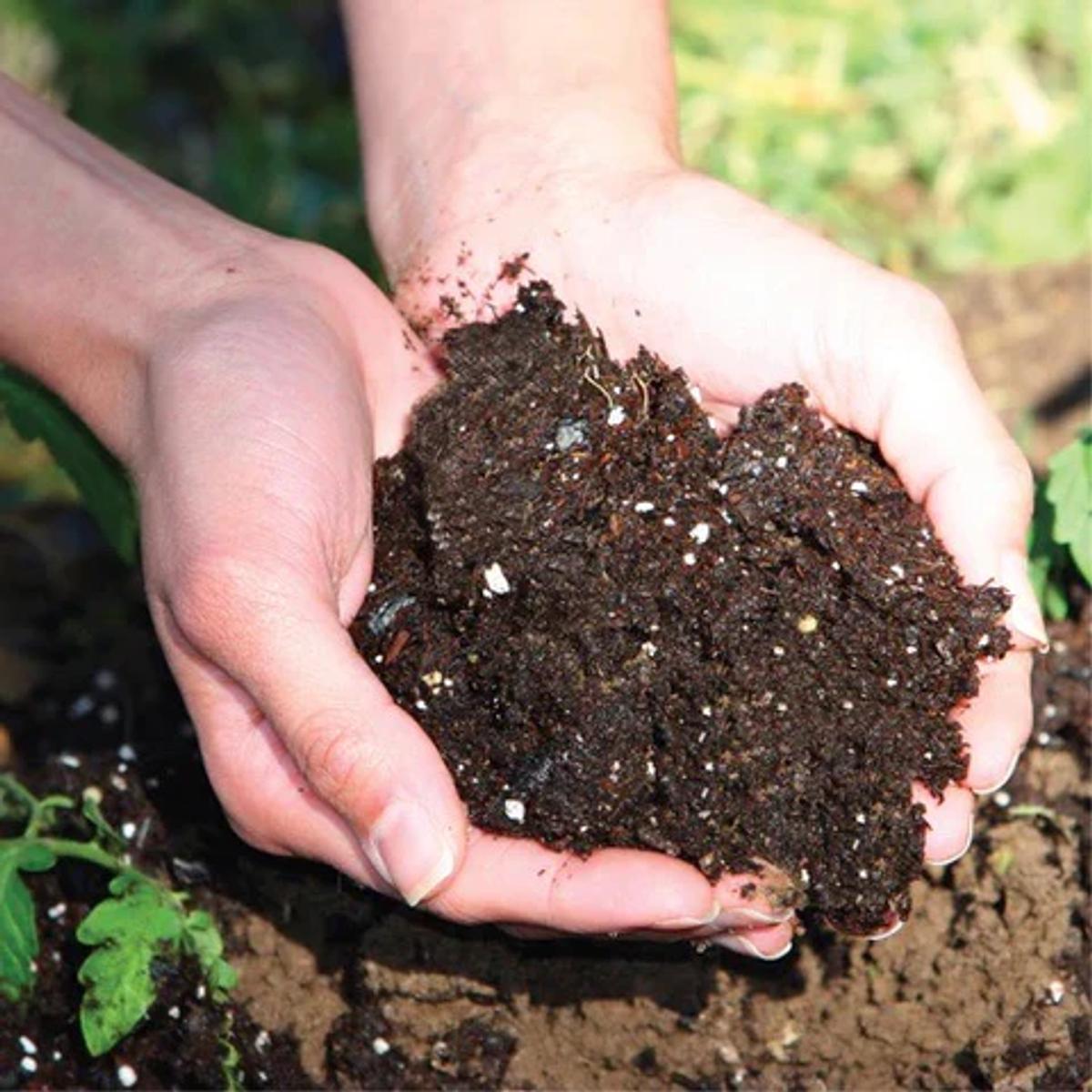
Soil Conditions
To ensure you grow a successful native plant garden, it's important to first understand the soil conditions. Each soil has its own nutritional profile and characteristics to support certain types of plants. For instance, some soils are sandy, which have good aeration and water drainage. So, plants that lean towards the dry side do well in these soils. Similarly, plants that require a lot of moisture prefer clayey type of soils which are quite dense and have less water drainage.
How to Determine the Soil Type in Your Yard
If you are not too keen on hiring an expert at the moment but still want to understand the soil type, here are two easy ways for you:
Using a Squeeze Test:
Take a handful of wet soil and squeeze it firmly. Now open your hand to check its condition.
If the soil...
Holds shape yet crumbles upon slight touch it’s a loam soil, perfect mix of moisture and water drainage.
Holds shape and stays intact when you poke it, its clay soil which is dense, nutrient-rich and has less water drainage
Doesn’t hold shape and falls apart when you open your hard, it’s sandy soil which is quite gritty, airy and has better water drainage.
Ask Your Neighbor
If your neighbor has already setup a native plant garden, why not check with him before you proceed? The soil in your yard usually matches with the one in your neighborhood, and hence, you can collect important information from them on soil types. Plus, there are high chances you can learn from their mistakes and get a better success rate.
Sun and Shade
Do you know which areas in your garden get the most sun and shade exposures? Creating zones based on the amount of sun and shade an area receives per day will help you understand the microclimates in the garden — that is, which area is hot and drier, which area is shady and damp etc. You will need this information to plan which plants go where in your yard.
How to Identify Sun and Shade In Your Yard?
Create a sun map to mark the areas receiving full sun, partial sun, partial shade, dense shade etc. and place the right plants in them
Use a sun calculator app to know the number of hours of sun or shade a particular area in your yard receives in a day
2. Selecting the Wrong Plants
Many people feel that the challenging part about growing a native plant garden is identifying a native from a non-native. The reason is that a majority of the present-generation Americans are unfamiliar with native species which have long disappeared from the residential landscapes. So, people are forced to buy what the nurseries sell and commercial nurseries often don’t stock up on natives due to lesser demand. That’s not all! Buying a bunch of plants that looked good to you in the stores and expecting them to work well in your yards can be a big mistake! Remember – natives or non-natives, not all plants work equally in all yards.
Finding the right plants
Check out the plant lists in your state. You can use the local native plant directory to find out the names with pictures.
Shortlist the plants which grow well in your yard conditions that comprise of the sun, shade, soil, water etc.
Find a local plant nursery that specializes in native plants and show them the list of the plants you selected. You can also do a simple google search like “native plant nurseries near me” to find the nearest one in your locality.
3. Ignoring Weed Control and Ground Covers
Weeds are invasive species that dominate your gardens and quickly take up the entire space. They also leave an unsightly look to your yard and dilute your efforts of making a beautiful native plant garden. While pulling them out with your hand is an easy weed control method, leaving the roots still intact in the ground can make them more aggressive in the later season. Also, disturbing the soil too much while weeding spreads the seeds in wider areas of your garden worsening the problem.
How to Tackle This?
Go for effective weed management techniques like mulching to block out the sunlight and water to the weeds and eventually force them to die.
Use ground covers like clovers which naturally block out the sunlight and nutrients to weeds and eliminate them from your yards. Ground covers also serve as a soft carpet on your yards which you can use as eco-friendly alternatives to lawns.
To take proactive control measures, understand what kind of weeds grow in your garden such as annuals, perennials or biennials, based on their lifecycles.
Avoid deep tillage in your garden to prevent seeds from spreading and germinating
4. Poor Adherence to Structure and Garden Layouts
Arranging plants in a garden might sound like a simple task, but it is the step where many beginners miserably fail. Many gardeners follow a random planting method in which they bring a bunch of plants and place them wherever there is a space in the yard. This leads to structural issues that leave a disconnected look to your yard and spoil its overall look.
Our Solution
We recommend using a 3-layer structure for a native plant garden for beginners.
The upper level offers a vertical support system to the garden where grasses and shrubs work well. Avoid plants that will grow more than 3 feet tall if your plant community is centered more in the middle of your yard. However, if you are designing this layer at the borders of your yard or against a fence or wall, 5 feet tall plants are acceptable.
The middle layer provides interest in the form of perennial flowers. Mix 3-5 different types of perennials to achieve a colorful look with a full and rich foliage.
The lower level is your native ground cover to block weeds and lock in moisture.
Creating a native plant garden has a high success rate if you follow these tips. All My Home Park native plant communities use these design guidelines to ensure success. We are your resource to start exploring the beauty and restorative benefits of native plants and landscapes.

